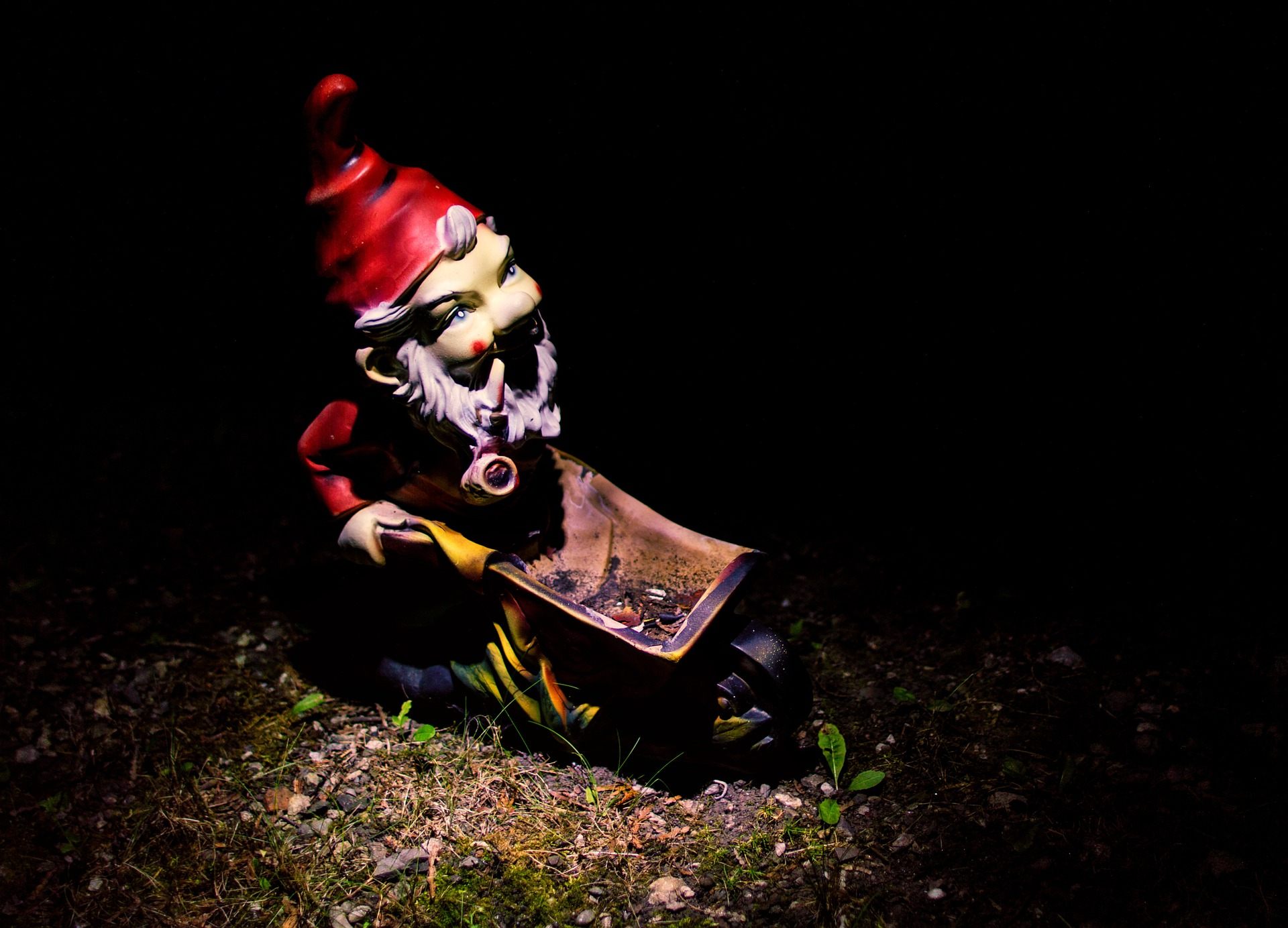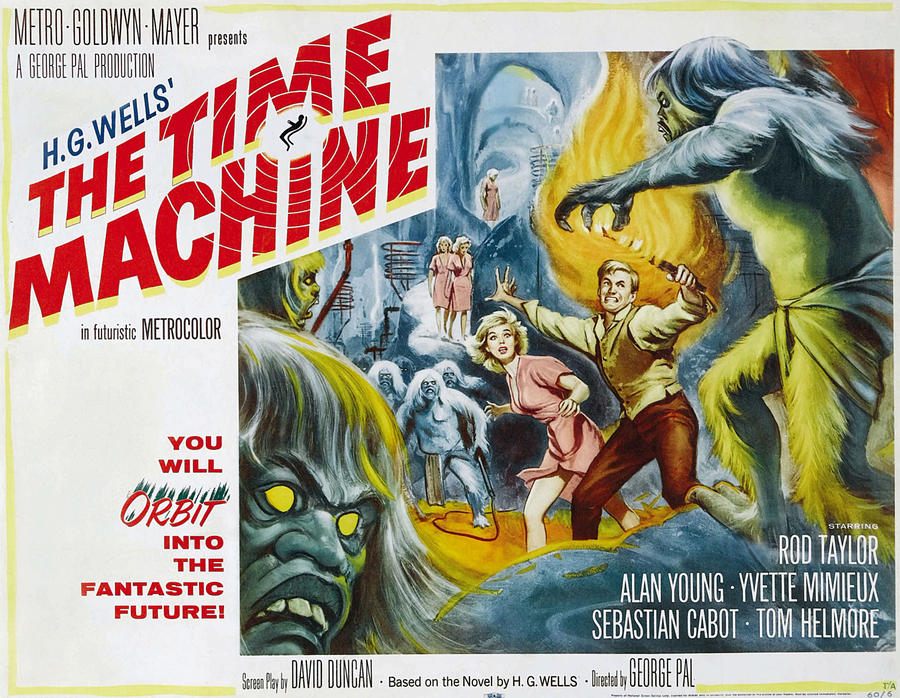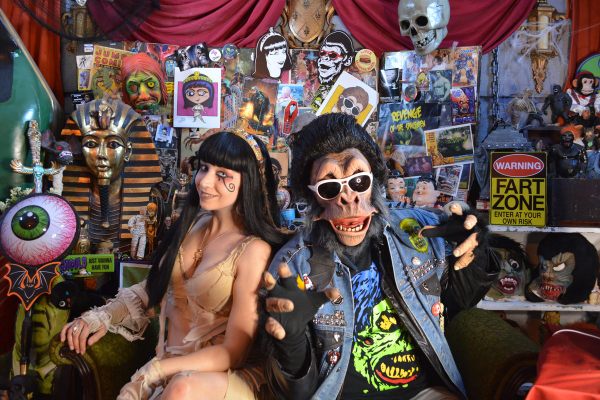Morlocks, CHUDS and Graboids: A Bestiary of Fictional Subterranea

Gnomes… always peering at us from below. (Photo: Humusak/pixabay)
Humans have long been fascinated with the underground. It’s a dark, uncharted place where we’ve allowed our minds to roam free, imagining all manner of creatures, from children’s book heroes to horror film beasties. Here are a few of the classics.
Nomes (or Gnomes)
Gnomes are likely the cutest, cuddliest underground creatures. They’re often small and roly poly and generally have big noses–although the Nomes who live under the earth’s surface in L. Frank Baum’s Ozma of Oz are mean-tempered half-human, half-rock people who die when exposed to the insides of chicken eggs. The idea of a gnome was apparently introduced in the 16th century, its etymology linked to the Greek term for “earth-dweller.” Some gnomes are known to move through solid earth as we humans pass through above-ground air. Famous gnomes include the “Earthmen” living in Narnia’s Underland, the mischievous garden gnomes of Harry Potter, and the Travelocity gnome.

Tell your great-great-great-great-great grandchildren to watch out for Morlocks! (Photo: WikiCommons/Public Domain)
Morlocks
Morlocks are the creation of writer H.G. Wells, who first introduced them in his 1895 novel The Time Machine. They’re classic creatures of the underground, with the greyish skin, grey-red eyes, flaxen hair, and weak constitution associated with thousands of generations without sunlight. They live beneath the English countryside and can only access the surface through a series of structures resembling wells. In Wells’ novel, it’s AD 802,701 and the Morlocks and Eloi are the two existing post-human races. Morlocks are the underground working class doing all the drudge work, while the Eloi are the above-ground upper class living lives of ease–though at night, Morlocks catch Eloi and eat them. Morlocks have popped up in other works of fiction and film, and in different iterations, Morlocks can take on some alternate characteristics: in a 1960 film adaptation they’re blue, and in a 2002 version, they’re strong and ape-like.
C.H.U.D.
C.H.U.D. is an acronym for “Cannibalistic Humanoid Underground Dweller,” as well as the name of the 1984 film (followed by C.H.U.D. II and Bud the C.H.U.D.) in which they appear. If you’re unfamiliar with the film, then here’s the basics: a C.H.U.D. is a human-turned-monster mutated by radioactive, toxic waste who is always hungry and emerges from the sewers only to seize human meat. C.H.U.D. live underground and their existence is connected to the Nuclear Regulator Commission! To the NRC, C.H.U.D. simply represents waste by-product (“Contamination Hazard Urban Disposal”). But to citizens of New York, C.H.U.D. are beasts with glowing eyes and dagger-like teeth out to get them.

Mole may live underground, but the dark can still be scary! (Photo: Wikimedia Commons/Public Domain)
Mole
It’s hard not to love the darling anthropomorphized Mole in Kenneth Grahame’s classic, The Wind in the Willows (1908). He’s accompanied by Rat, Badger, and Mr. Toad, but Mole is the star of the show: a mild-mannered homebody who decides to explore the outside, upstairs world. He puts down his brooms and dusters one day in a huff and scrambles out of the seclusion of his cellarage. Seeing a river for the first time, Mole learns to swim and to row, and exposed above ground, he discovers the feel of the wind in the willows. Mole reminds us not to take sunlight and soft breezes for granted.
Moloids
Moloids—also known as Mole People or Subterraneans—are creatures of the kingdom of Subterranea, brought to us by Marvel. They are weak, hairless, and sallow-skinned, finding strength in numbers. Subterranea seems to have limited dating options, which meant that Moloids became seriously inbred. This intense inbreeding caused great damage to their intelligence and independent thinking; after enough inbreeding, Moloids started to simply follow whoever seemed to be in charge. At one point they worshipped Mole Man, which is why they became known as Mole People, or Mole Men.
The Sewer Alligator
Someone’s always talking about the alligator in their sewer. Stories of such gators date back to the 1920s (back when alligators did in fact live in the sewers), but thanks to the 1980 film Alligator, we know exactly how they got there–it happens when people flush their baby alligators down the toilet! This definitely happened at least a few times, since shops (in Florida) used to sell baby gators as novelty souvenirs, and of course some New York tourists tried making them into pets. When things started getting out of hand, down the toilet they’d go. Sewer workers have reported gator sightings, but none were ever confirmed. Hmm…
Graboids
Graboids, also known as Dirt Dragons or Tu-Long, were brought into this world by the 1990 movie Tremors (followed by Tremors 2, 3, 4, and 5—which came out this month!) They are basically huge subterranean leathery larvae, growing to lengths of up to 30 feet and weighing in at up to 20 tons. They also have three 10-foot serpentine tongue-tentacles, each of which has its own set of jaws and teeth. They’re always hungry and will eat whatever they come across–sheep, donkeys, humans, even other Graboids. They have no eyes or nose, so they locate prey by following vibrations and tremors, ambushing their targets, and regurgitating anything inedible. Graboids have now been around for 25 years, surviving multiple cinematic regurgitations.

“Z” from Antz: above ground and human sized! (Photo: Jim Larrison/flickr)
Antz
Cast your mind back to 1998, when DreamWorks Animation gave us “the world from a whole new perspective.” Antz was the company’s first animated film, and gives us the story of an underground totalitarian ant society in New York’s Central Park where everything is very militaristic, including the dancing. It’s also very dark and earthy, since these antz don’t see the light of day. The plot twist comes when the underdog protagonist and his ant princess crush get thrown into the above-ground world. Then there’s an ant revolution and worker ants eagerly claw their way to the surface.
The Centipede, the Glowworm, the Earthworm, et al.
Roald Dahl’s James and the Giant Peach is one of very few children’s novels to render fruit-infesting bugs adorable. Seven-year-old James Henry Trotter is given a bag of magic “green things,” but he accidentally spills them into the dirt—at which point a nearby tree starts growing a single humongous peach. Inside the peach, James discovers a new gang of best friends: the Centipede, the Earthworm, the Glowworm, the Silkworm, the Ladybug, the Old Green Grasshopper, and Miss Spider, who have all become human-sized after finding magic green objects in the dirt in which they lived. After a madcap adventure by sea and by seagull, the peach is impaled upon the tip of the Empire State Building, and New Yorkers mistake the harmless bugs for monsters or extraterrestrials. But James, of course, shows us that creepy underground creatures can instead become fond friends, and each of the crew finds a job in the city’s human society.
Drow
Drow (or dark elves) are evil creatures from Dungeons & Dragons, and unlike many creatures from sunless places, their skin is dark, not sallow. Drow have light, well-coiffed hair and often have bright red eyes. Their name, “drow,” comes from the Scots word for “troll,” and they appeared in the game’s 1977 1st Edition, where they were listed as “The Black Elves.” They are known as weak with their fists, but strong with their magic. The drow live with other shadowy creatures in the Underdark, a network of underground caves, and can live as long as 1,000 years.








Follow us on Twitter to get the latest on the world's hidden wonders.
Like us on Facebook to get the latest on the world's hidden wonders.
Follow us on Twitter Like us on Facebook